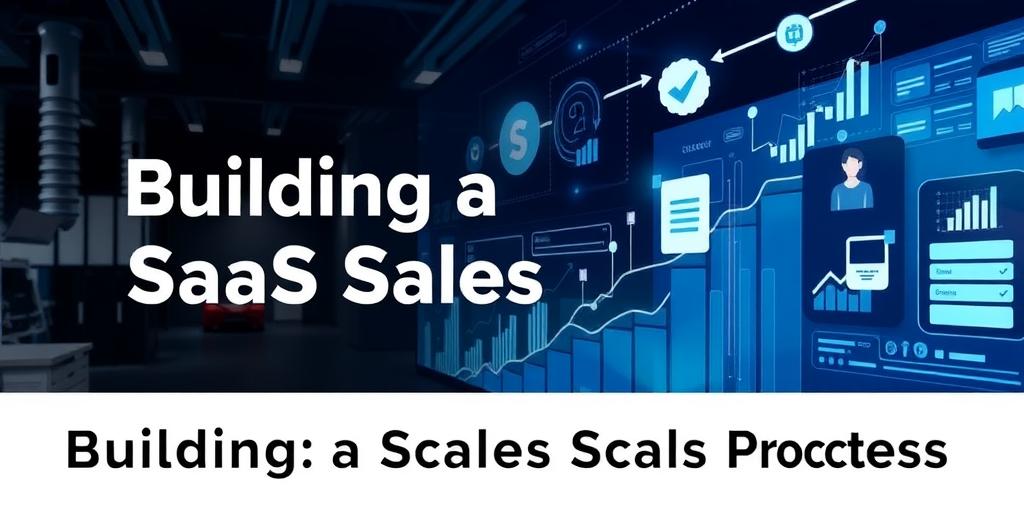Building a Scalable SaaS Sales Process
In the Software as a Service (SaaS) industry, a scalable sales process is crucial for sustained growth. Unlike traditional sales models, SaaS sales need to accommodate recurring revenue, customer retention, and evolving product features. This post outlines the key components of building a sales process that can scale with your SaaS business.
1. Define Your Ideal Customer Profile (ICP)
Before you start selling, understand who you’re selling to. An Ideal Customer Profile (ICP) is a detailed description of the type of customer who will derive the most value from your product and provide the highest lifetime value to your business. Key elements of an ICP include:
- Industry: What industries benefit most from your SaaS solution?
- Company Size: Are you targeting startups, SMEs, or large enterprises?
- Revenue: What is the annual revenue of your ideal customer?
- Pain Points: What challenges does your product solve for them?
- Tech Stack: What other software do they use?
2. Map the Customer Journey
Understand how your customers move from initial awareness to becoming paying customers and advocates. A typical SaaS customer journey includes:
- Awareness: The customer becomes aware of your product through marketing efforts.
- Interest: The customer shows interest by visiting your website or downloading content.
- Consideration: The customer evaluates your product, often through a free trial or demo.
- Decision: The customer decides to purchase your product.
- Adoption: The customer integrates your product into their workflow.
- Retention: The customer continues to use your product and renews their subscription.
- Advocacy: The customer becomes an advocate for your product, providing referrals and testimonials.
3. Implement a CRM System
A Customer Relationship Management (CRM) system is the backbone of a scalable sales process. It helps you manage customer interactions, track leads, and automate sales tasks. Popular CRM options include Salesforce, HubSpot, and Zoho CRM. Key benefits of using a CRM include:
- Centralized Data: All customer data is stored in one place.
- Sales Automation: Automate repetitive tasks like email follow-ups and lead assignment.
- Reporting and Analytics: Track key sales metrics and identify areas for improvement.
- Improved Communication: Enhance communication between sales, marketing, and customer support teams.
4. Develop a Sales Playbook
A sales playbook is a comprehensive guide that outlines your sales process, best practices, and resources. It ensures consistency and efficiency across your sales team. Key components of a sales playbook include:
- Sales Process: A step-by-step guide to the sales cycle.
- Scripts and Templates: Email templates, call scripts, and proposal templates.
- Competitor Analysis: Information on your competitors and how to position against them.
- Objection Handling: Strategies for addressing common customer objections.
- Product Information: Detailed information about your product features and benefits.
5. Automate Sales Tasks
Automation is essential for scaling your sales process. Identify repetitive tasks that can be automated to free up your sales team to focus on more strategic activities. Examples of sales automation include:
- Lead Qualification: Automatically score leads based on their behavior and demographics.
- Email Marketing: Use automated email campaigns to nurture leads.
- Meeting Scheduling: Use tools like Calendly to automate meeting scheduling.
- Task Management: Use project management tools to assign and track sales tasks.
6. Train and Onboard Your Sales Team
Proper training and onboarding are critical for ensuring your sales team can effectively execute your sales process. Provide ongoing training on product updates, sales techniques, and industry trends. Key elements of sales team training include:
- Product Training: In-depth training on your product features and benefits.
- Sales Skills Training: Training on sales techniques, negotiation, and closing.
- CRM Training: Training on how to use your CRM system effectively.
- Continuous Learning: Encourage your team to stay up-to-date with industry trends and best practices.
7. Monitor and Optimize Your Sales Process
Regularly monitor your sales metrics and identify areas for improvement. Key metrics to track include:
- Lead Conversion Rate: The percentage of leads that convert into customers.
- Sales Cycle Length: The average time it takes to close a deal.
- Customer Acquisition Cost (CAC): The cost of acquiring a new customer.
- Customer Lifetime Value (CLTV): The total revenue you expect to generate from a customer over their lifetime.
By continuously monitoring these metrics, you can identify bottlenecks in your sales process and make data-driven decisions to optimize performance.
Conclusion
Building a scalable SaaS sales process requires a strategic approach that focuses on understanding your ideal customer, mapping the customer journey, and leveraging technology to automate and optimize your sales efforts. By implementing these strategies, you can build a sales engine that drives sustainable growth for your SaaS business.









